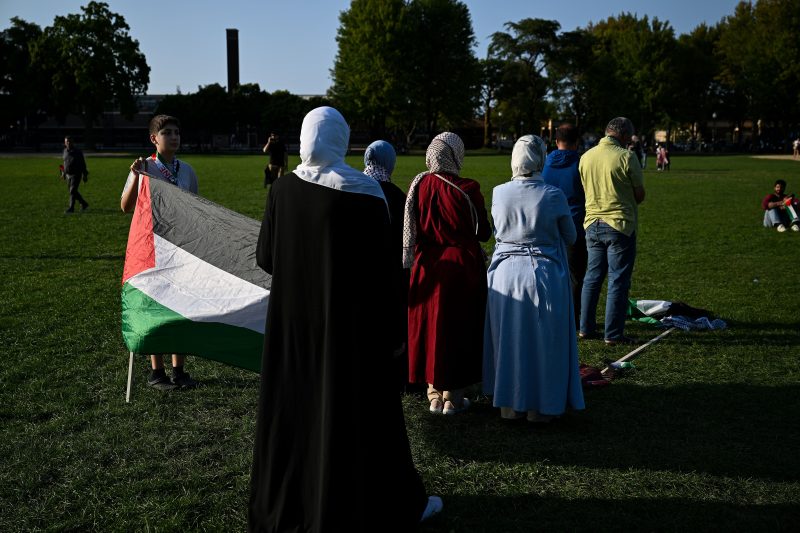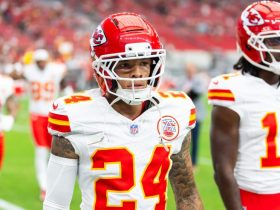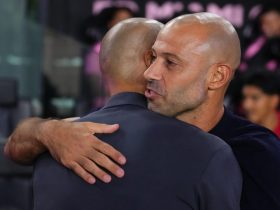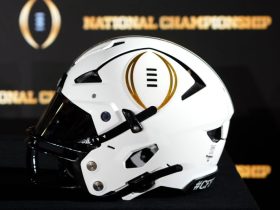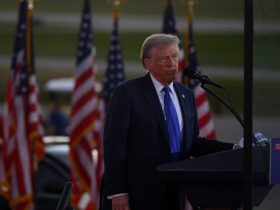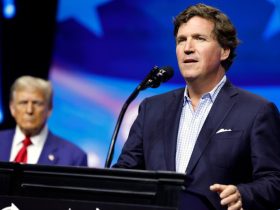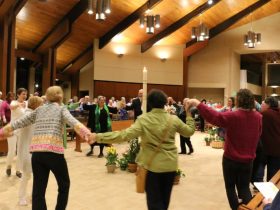CHICAGO — Democrats worried that protesters might derail their shining moment this week, pushing the spotlight from Vice President Kamala Harris to the devastation in the Gaza Strip.
Republicans claimed that the Democratic National Convention was spiraling into chaos, disparaging this host city as a “Third World country.”
But as the party wrapped up its four-day gathering Thursday night, the reality on the ground remained calmer than either side had anticipated. Thousands of demonstrators rallied here as delegates met in the United Center — without any convention-upending chaos.
“We intended to have a peaceful, family-friendly march,” said Faayani Aboma Mijana, spokesperson for a large coalition of groups calling itself March on the DNC. “And that is what happened.”
Organizers had forecast crowds in the tens of thousands for each of the coalition’s two events Monday and Thursday. Police officials said the peak number hovered around 4,000 — a healthy though not overwhelming First Amendment showing. In the end, fears of disruption turned out to be more stressful for convention delegates than what actually unfolded beyond the United Center’s perimeter, with authorities crediting careful planning on both sides of the security fences.
By the convention’s final evening, officers had tallied just 72 arrests.
Chicago police superintendent Larry Snelling praised his officers for showing restraint and, as part of a planned strategy, working in tandem with civilian protest marshals — trained volunteers acting as a buffer between demonstrators and police.
Yet Snelling, who personally monitored the week’s biggest rallies, also lauded demonstrators for largely keeping the peace. “They are policing their own people,” Snelling told reporters at a Thursday briefing. “That was very helpful to us because it reduces the risk of conflict.”
For much of the summer, the political climate seemed ripe for mayhem. In the last 40 days alone, a would-be assassin opened fire on Republican presidential nominee Donald Trump. President Joe Biden abruptly ended his reelection campaign. Tensions over the White House’s handling of the Israel-Gaza war threatened to boil over, jeopardizing the united front that Democrats hoped to display as Harris rose to the top of the party’s ticket with less than three months before Americans head to the polls.
Then there was the notorious memory of Chicago and the 1968 Democratic National Convention, when police bashed protesters and fights erupted on the convention floor. Fifty-six years later, crowd-control tactics have evolved and scrutiny of law enforcement’s use of force has intensified, noted Marsha Barrett, a history professor at the University of Illinois.
“We should not compare the two moments,” she said.
Back then, Mayor Richard J. Daley authorized shooting “to maim or cripple” looters. Even without such explicit permission to target rioters — especially in an age of cellphone videos and body cameras — the 2020 clashes in cities nationwide following the police killing of George Floyd remind Americans how streets that are calm one minute can erupt the next.
One Wednesday afternoon scene near the convention center reflected the newer approach to tamping down confrontation and violence.
A man leaned over the railing of an elevated train stop, waving a Palestinian flag as a pro-Palestinian march went by on the street below. Two officers moved in to restrain him. The trio struggled for a moment as some in the crowd looked up and began chanting, “Let him go, let him go.”
Yet instead of the situation escalating, three of those volunteer marshals rushed forward. The officers backed off as the marshals persuaded the young man to rejoin the crowd.
Clash averted.
Since the convention started Monday — as roughly 50,000 guests poured into Chicago, and millions of people watched from home — protesters sought to highlight the suffering of civilians in Gaza, among other causes. According to the Gaza Health Ministry, more than 40,000 Palestinians have died since Israel launched a military campaign in response to the Oct. 7 cross-border attack by Hamas that killed about 1,200 people. Nearly half of the approximately 250 people abducted during the rampage remain hostages.
Luz Ramirez, 25, wore a “Free Palestine” shirt to one rally while toting a Mexican flag — for her, a symbol of the diversity of the demonstrators demanding an end to the ongoing assault on Gaza. And though activists secured some concessions from convention officials, the Chicago resident doesn’t think party leaders can now move on — not when so many of the party’s voters showed up to air deeply felt frustrations.
If meaningful steps aren’t taken, Ramirez warned, “I think [protests] could get more aggressive.”
Gordon Quinn, an award-winning documentary filmmaker, understands that sentiment and has some historical perspective on it since he protested the Vietnam War at the ’68 convention.
He points to other differences between the activism outside the current convention and that past one. The present-day demonstrations don’t have two major animating factors, as was the case back then: a more divided Democratic Party and a Vietnam War draft.
But with the number of Palestinians killed in Gaza, Quinn admitted, “it’s frustrating we can’t get more traction.” He planned to join the final rally Thursday evening, with the same personal goal as he had when he was 26: not getting arrested.
Only one scene this week came close to a physical altercation, when protesters outside the Israeli Consulate marched into a police line Tuesday night. About five dozen people, including three journalists, were arrested in that scuffle.
At other events in the streets and parks around the United Center, parents brought children. Volunteers arrived with trash bags — and urged rally attendees to clean up after themselves. People paused for prayer breaks.
The Chicago area’s Palestinian community had been organizing marches long before the convention swept into town. Early on, organizers aimed for family-friendly affairs in which seniors could keep their own pace and keffiyeh-draped toddlers could ride safely on older siblings’ shoulders.
Maria Badawi, 45, came with her children from a southwest suburb. She’d held a distant hope that Democrats would add a position on Gaza to the party’s convention agenda. By Thursday night, that hope had been dashed.
She teared up while talking about her worries for her husband’s relatives in Gaza. When they talk, Badawi can sometimes hear shots and blasts in the background. “We don’t know if they’re safe,” she said.
Some demonstrators gained entry — lawfully — to the tightly secured United Center, where pro-Palestinian delegates had organized a sit-in to protest the party’s refusal to grant their group a speaking slot. A half-mile away, at a public park, marchers said that lack of stage time was unfair.
Nadeem Iqbal, who has voted for Democrats all his life, no longer feels the party represents him. “We have no voice,” he said. “They’re completely ignoring us. There’s fencing all across the United Center. We’re walled off.”
But he doesn’t hold out hope that the Republican Party will do better in responding to Palestinian supporters who want to see the United States end military support for Israel. Moving forward, the 56-year-old Iqbal plans to focus on helping third parties gain influence.
“I realize it’s going to take time,” he said. “But it’ll give us a better voice in the future. It doesn’t really seem to be working with the Democrats and the Republicans.”
Other demonstrators, registered Democrats, said they would keep coming to rallies and marches until they feel heard by the occupant of the White House. That’s the message they wanted to send to the Democratic National Convention: Look at how many of your own people showed up to oppose you.
Yousef Khasho, 56, is a West Bank native who now lives just outside of Chicago. “If they want our vote,” he said, “they have to show us something.”

